The successful U.S. hit against Ayman al-Zawahri, the post-Osama bin Laden leader of al-Qaida, is a great moment of justice: Zawahri had been a key plotter of 9/11 and other vicious terrorist attacks. Although in recent years he has not been involved in daily tactical al-Qaida planning, his death will have a negative strategic and demoralizing impact on al-Qaida. Al-Qaida will not stop existing and operating, but it has again been put on the back foot.
This impressive show of the effectiveness and persistence of U.S. counterterrorism efforts is also an important demonstration to the world — and to terrorist groups in Afghanistan and beyond — that despite not having U.S. troops on the ground in Afghanistan, the United States retains a potent capacity to deliver effective counterterrorism punches.
However, what does it tell us about the terrorism and counterterrorism picture in Afghanistan since the Taliban takeover?
Hubris, Lies, Entanglements, and Commitments
The location of the Zawahri hit makes for terrible optics for the Taliban and exposes its hubris. Zawahri was killed in a comfortable neighborhood of Kabul, previously favored by officials of the fallen Afghan Republic and now replete with high-ranking Taliban members. He wouldn’t have lived there without some Taliban leaders’ knowledge. In fact, he was killed in a house belonging to a senior aide to Sirajuddin Haqqani, the acting Taliban minister of interior and leader of the powerful Haqqani faction of the Taliban. This exposes both the Taliban’s and Sirajuddin’s duplicity, and the strong, persistent affinity between al-Qaida and the Taliban.
Indeed, this affinity has helped al-Qaida retain its presence in Afghanistan since 2001. As late as 2015, al-Qaida operated large training camps in Afghanistan.
The departure of U.S. troops from Afghanistan was expected to provide various terrorist groups some safe havens in the country. This spring, a U.N. report assessed that al-Qaida has been able to operate in Afghanistan with a “greater freedom of operation”.
Various Western counterterrorism officials and terrorism experts with whom I spoke in the spring and summer of 2022 believed that most al-Qaida fighters in Afghanistan remain under Haqqani command, or that the Haqqanis, including Sirajuddin, had visibility into their activities, such as through Haqqani fighters embedded within al-Qaida networks.
Nonetheless, three key questions remained and are still outstanding:
- Would the Haqqanis and potentially the rest of the Taliban leadership be willing to tolerate a terrorist attack from within Afghanistan — even though the Taliban has repeatedly and consistently promised it would not allow any such attacks?
- Would the Taliban be able to prevent an al-Qaida attack?
- Could al-Qaida conduct a terrorist attack abroad unilaterally without informing the Haqqanis, or their learning about it?
The Taliban’s key focus and the determinant of its counter- or pro-terrorism posture is preserving Taliban unity, and preventing defections from the Taliban to the Islamic State in Khorasan (ISK), the Taliban’s principal armed rival and enemy within Afghanistan and a vicious terrorist group. Offsetting ISK recruitment, which is underpinned by very hardline Salafi sectarian ideology, has also been the consistent Taliban justification for its own hardline and hardening policies since its takeover of Afghanistan. Quite apart from their personal ideological proclivities, the Taliban leaders have been preoccupied with ensuring that their mid-rank and rank-and-file fighters do not feel that the Taliban delivers less ideological succor and jihadi brotherhood than ISK and thus split off for ISK.
Ironically, angry speculations within the Taliban of who from within the group provided intelligence on Zawahri, and Sirajuddin’s inability to protect him, may cause some defections to ISK.
foreign Influence in Afghanistan
Foreign fighters have been present in Afghanistan since the 1980s and continued to enter and operate there between 2001 and 2021. They include Arabs, Pakistanis, Chechens, Uzbeks, Tajiks, and Uyghurs.
Since August 2021, new foreign fighters have come in from the Middle East, Pakistan, and Central Asia in considerable numbers, according to Western officials with whom I spoke in the spring and summer of 2022.
The Taliban has been reluctant to hamper their influx — since tolerating their presence in Afghanistan has been crucial for the Taliban to retain access to funding from Pakistan and the Gulf. Any visible Taliban actions against foreign fighters would make the Taliban appear to be betraying the broader jihadi brotherhood and thus jeopardize the Taliban’s foreign funding.
This foreign funding is important for two reasons. At the institutional level, it is one stream of Taliban income amid a collapsed Afghan economy badly crippled by Western sanctions and the prospect of a forthcoming winter 2022 famine. At an individual Taliban commander level, the foreign funding provides critical revenue for paying the commanders’ personal fighters and thus is a key source of personal protection for the commanders’ and leverage within the Taliban. Taliban leaders without large numbers of their own fighters have much less influence. If the Taliban does actually enforce its poppy ban in the coming growing season, this foreign income will become even more important.
A second important reason why the Taliban has not been willing to publicly announce that foreign fighters are unwelcome in Afghanistan, let alone to act on any such declaration, is the existence of deep personal networks. Many foreign fighters who have been fighting in Afghanistan for decades have intermarried with Taliban and local families, and bonds of camaraderie and jihadi kinship have been forged. One manifestation: Uyghur commanders in northern Afghanistan are commanding Taliban non-Uyghur units.
Finally, like resolute actions against terrorist groups in Afghanistan, expelling foreign fighters from Afghanistan, let alone arresting them and handing them over to other countries, would also undermine the Taliban’s internal cohesion and exacerbate the risk of defections. Thus, there is little chance the Taliban would adopt such policies.
According to Western officials with whom I spoke, Sirajuddin Haqqani has been telling international interlocutors that the foreign fighters’ home countries should take them back and has been pointing out the challenge of Afghanistan’s porous borders. To prevent the influx of foreign fighters, Haqqani has been asking the West to provide the Taliban government with border screening technologies, radars, and intelligence. Naturally, any such cooperation from the West’s side would come with considerable risks of the Taliban abusing any counterterrorism assets or leaking out intelligence.
China finds itself in an analogous counterterrorism position vis-à-vis the Taliban: Various Chinese officials have demanded that the Taliban cut ties to other militant groups and act against Uyghurs. But although the Taliban has never criticized China’s brutal repression of the Uyghurs, it has also not acted against Uyghur fighters in Afghanistan, including in recent months. Instead, the Taliban has falsely claimed that Uyghur fighters have left Afghanistan.
LESSONS FROM Tehrik-e-Taliban
Nonetheless, the limits to Taliban’s ability to prevent external attacks from Afghanistan have been revealed by the Taliban’s inconsistent ability to prevent Tehrik-e-Taliban Pakistan (TTP) from attacking Pakistan and Chinese assets in Pakistan from eastern Afghanistan. After the Taliban’s takeover of Afghanistan, TTP escalated its attacks in Pakistan in winter 2021. Although Pakistan hoped the Taliban would simply shut down TTP, the Taliban, acting principally through the Haqqanis, have instead repeatedly chosen to attempt to broker TTP ceasefires.
Yet the Haqqanis and their leader Sirajuddin have not been able to act consistently and robustly as effective intermediaries between Pakistan and TTP. In spring 2022, Pakistan again resorted to bombing campaigns against the TTP inside Afghanistan. Although the Taliban did broker a new ceasefire with the TTP in late spring that hobbled into the summer, there is only limited likelihood it will last with any robustness.
The Taliban’s and the Haqqanis’ relationship with TTP is complex. They have operated in the same areas of eastern Pakistan and at times have had cooperative and supportive relations. There is also TTP intermarriage with Taliban networks in eastern Afghanistan, and the Haqqanis have historically been able to take advantage of TTP networks in Pakistan.
At the same time, TTP factions were among key constituent forces of ISK and several years ago they intensely battled the Taliban in eastern Pakistan. Thus, the Taliban, including the Haqqanis, do not want to alienate TTP and drive more TTP toward ISK, even though the Taliban’s tolerance of TTP complicates its relations with Pakistan and with China.
Still, despite its dissatisfaction, Pakistan cannot afford to sever its relationship with the Haqqanis, Pakistan’s closest ally within the Taliban factions. Many southern Taliban factions have long felt deep resentment toward Pakistan and may even enjoy the terrorist pain the TTP is inflicting on Pakistan.
Cooperating with the Taliban on Counterterrorism?
In its strategy toward TTP, the Taliban is likely going to adopt Pakistan’s own playbook toward jihadi militants: tolerate and coddle them until international outcries necessitate temporary limited action — whether limited strikes or negotiations.
Despite having egg on its face as a result of Zawahri’s presence in the middle of Kabul, the Taliban remains unlikely to publicly sever relations with al-Qaida or announce that foreign fighters are no longer welcome in Afghanistan, let alone start rounding them up en masse, though it could conceivably become motivated to expel some foreign and al-Qaida fighters.
The big question remains whether the Taliban will be willing to provide meaningful, if highly secret and always publicly disavowed, counterterrorism intelligence to the United States and the West should an attack on Western assets or allies from Afghanistan become imminent.
-
Acknowledgements and disclosures
The research reported here was funded in part by the Minerva Research Initiative (OUSD(R&E)) and the Army Research Office/Army Research Laboratory via grant #W911-NF-17-1-0569 to George Mason University. Any errors and opinions are not those of the Department of Defense and are attributable solely to the author.
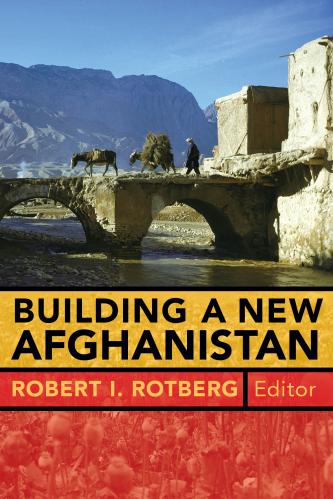
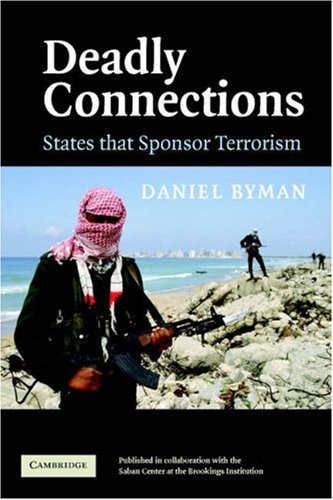
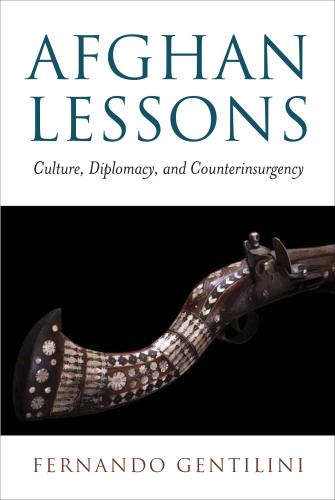
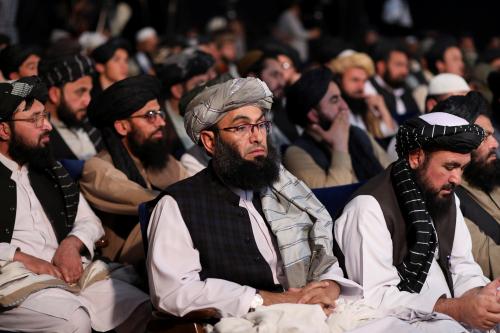

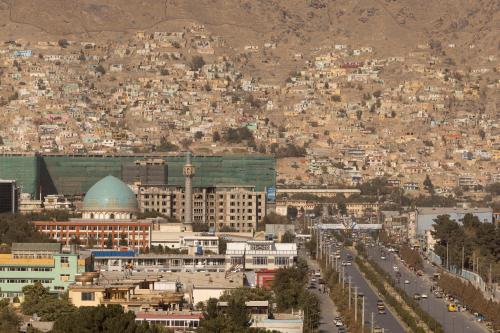


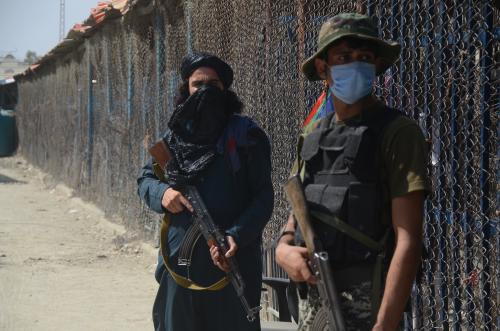

Commentary
What Ayman al-Zawahri’s death says about terrorism in Taliban-run Afghanistan
August 2, 2022